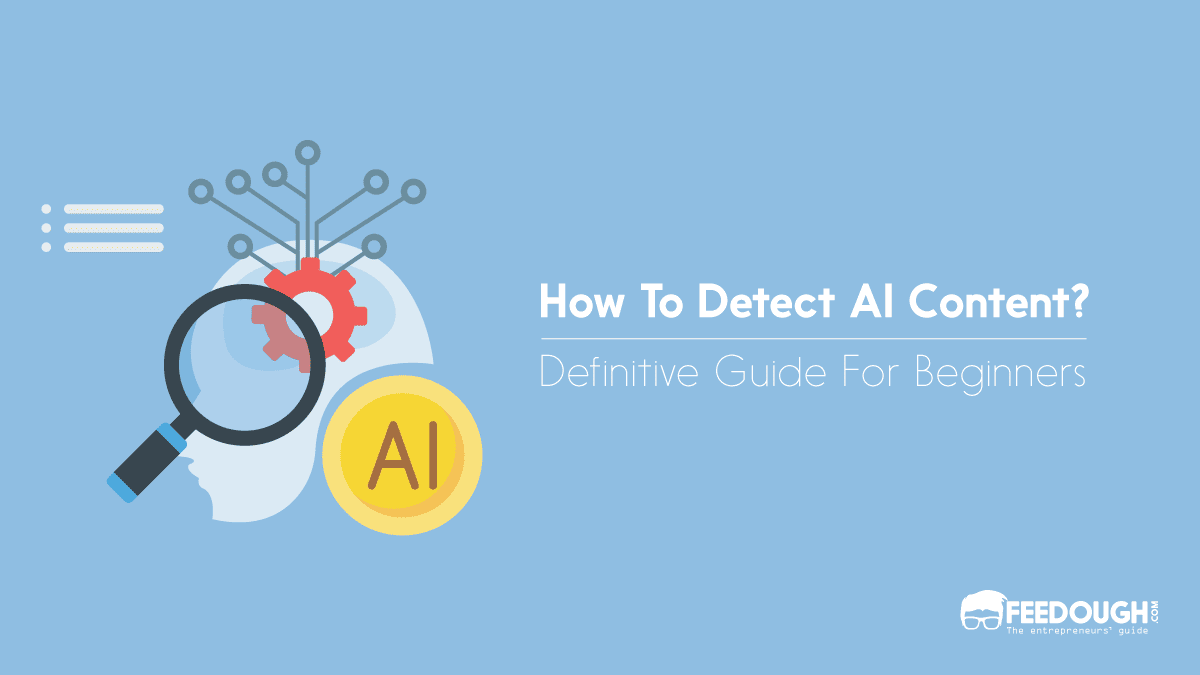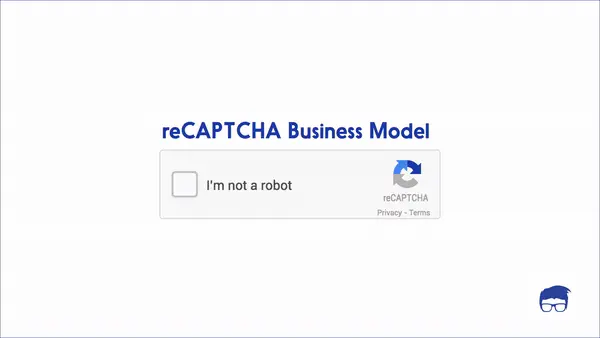Today, AI has become so advanced that it’s sometimes impossible to manually identify whether the content is written by humans or AI.
So, how can you be sure about the content’s authenticity, reliability, and credibility?
And it’s not just you; a recent study from Cornell University found that 40% of the times, participants believed they were chatting with a real person instead of an AI chatbot.
This ambiguity often leads to fake news and disinformation.
So, how can we spot this AI-generated content? Here’s a guide exploring effective methods to help you identify AI-generated content accurately.
Proven Tips To Detect AI-Generated Content Manually
It’s no rocket science to detect AI-generated content. This is because a robot works in a uniform manner where it follows specific instructions. Once you read a few of the generated outputs, you’ll find the pattern yourself.
But if you’re new to this, here are some patterns you should look out for.
Look Out For Transition Words
Transition words are those words or phrases that help you connect sentences, paragraphs, or ideas in a piece of writing. They act as bridges that helps you to understand the order of events and how they relate to one another.
You may use words like: Moreover, furthermore, in contrast, etc while writing.
However, AI-generated text often has an excessive or inappropriate use of these transitional words, making the text sound disjointed or robotic. It attempts to imitate the way you write by incorporating transition words. While they can mimic the structure and syntax, the placement or frequency of these transition words is unusual or forced.
You can expect to see these words, such as “Furthermore,” “Additionally,” “Moreover,” “Consequently,” and “Hence,” appear regularly in AI-generated content in order to connect ideas or emphasise points.
For example, this is AI-generated content:

In this example, you can observe the abundant use of transitional words like “In conclusion”,” “Moreover,” “However,” and “Ultimately” in every other paragraph. The frequent inclusion of these transitional words indicates the content’s more robotic or AI-generated nature.
Look Out For A Robotic Writing Style
AI writers rely on artificial intelligence rather than human input, so they often lack a distinct human voice. As a result, there is a lack of personal opinion or emotion. Unlike when you’re writing something, where you would usually include casual phrases or questions to make it feel like a real conversation, AI-generated content tends to be more like a series of well-structured paragraphs. It misses out on the natural flow of conversation.
As humans, we add our emotions, experiences, and biases to our content, which makes it relatable and engaging. However, when AI generates content, it tends to have a robotic writing style that lacks these human elements.
For example, let’s say you ask ChatGPT to write on the following: Who is a freelancer? Here’s the response it generates.

As you can observe, There is no distinct personality or unique voice in the AI-generated content. While the AI provides some pretty good information on who a freelancer is, it does not convey a particular tone or perspective and seems very monotone.
If you want to write content that makes it relatable to read, this is probably not the content you want to share with your audience. Now, let’s look at an example of content with some personality.

Do you see the difference? The writer is now talking directly to the audience in second person narrative and has a persona to it. It uses relatable language and gives a personal touch, even in a technical context, going beyond just conveying facts.
Look Out For Repetitive Language
Another way to spot AI-generated content manually is to look out for repetitive language. If you notice an excessive amount of keyword stuffing in an article, it’s likely that AI created it. Keyword stuffing is when you repeat a word or phrase so many times that it sounds unnatural.
Here’s why this happens: When people use prompts to generate AI output, they often include keywords within those prompts. This is done to help the AI model understand what kind of content is required. This generally results in instances where those keywords are repeated over and over throughout the text rather than creating a more varied and conversational tone.
For example, we asked ChatGPT, ‘What is AI?’ and this was the result:

It produced around 250 words, with the word AI being repeated 16 times, making the text sound unnatural and off-putting.
Look out for big vocabulary words
AI models have been trained on a vast amount of text, including complex and technical content. As a result, they have access to a wide range of vocabulary. So, when AI generates content, it tends to incorporate uncommon or overly sophisticated words that might catch your attention. Words like Utilised, implemented, leveraged, cutting-edge, and ascertained are often overused in AI-generated content.
While using big words might initially seem impressive, it can also make the AI-generated content feel disconnected from genuine human writing. We generally use simpler and more everyday language, like used, explained, and found in our writing, which makes it more relatable and easier to understand.
Here’s a list of the most commonly used words by AI:
- Utilised
- Implemented
- Leveraged, cutting-edge,
- Advancement in the realm
- Aims to bridge
- Aims to democratise
- Breaking barriers
- By harnessing the power
- Continue to make significant strides
- Continue to push the boundaries
- Continues to progress rapidly
- Exciting possibilities
- Exciting times lie ahead as we unlock the potential of
- Excitingly
- Expanded its capabilities
- Exploring new frontiers
- Exploring this avenue
- Groundbreaking advancement
- Groundbreaking study
- Groundbreaking technology
- In conclusion
- In the fast-paced world
- Intrinsic differences
- Let’s delve into the exciting details
- Mind-boggling figure
- More robust evaluation
- Navigate the landscape
- Notably
- Opens up exciting possibilities
- Paving the way for enhanced performance
- Possibilities are endless
- Potentially revolutionising the way
- Rapidly developing
- Redefine the future
- Remarkable abilities
- Remarkable breakthrough
- Remarkable proficiency
- Remarkable success
- Remarkable tool
- Remarkably
- Renowned
- Significant strides
- The necessity of clear understanding
- Typically
- Transformative power
- Truly exciting
- Uncover hidden trends
- Understanding of the capabilities
- Unleashing the potential
- Unlocking the power
- Unraveling
- Welcome your thoughts
- What sets this apart
- What’s more
- With the introduction
Look out for wrongly stated data facts
AI models are usually not very good at properly citing their sources and often end up giving random citations or wrongly stated data facts. This means that AI-generated content might lack reliable and credible references to back up the information it provides. A lack of proper citations is a red flag indicating that AI-generated the content.
When you come across an article or any piece of content, take a moment to check if there are clear and legitimate citations within the text. As machines collect data from various sources, they sometimes make mistakes or are not always up-to-date. If the AI doesn’t know something but is required to give an output, it’ll predict numbers based on patterns (which aren’t accurate).
Use AI Content Detection Tools to detect AI-generated content
Now, it’s not always easy for you to spot AI-generated content. These AI bots have been trained on a massive amount of human writing, so they know how to mimic our writing style. So, it can be hard for you to tell the difference between AI-generated and human-written texts, even if you consider yourself an experienced eye.
That’s where AI detectors can help you out. These advanced tools are specifically designed to detect and identify AI-generated content by looking for specific patterns and characteristics.
You’ll find different AI detector tools designed for various purposes like: AI checker for teachers, content writers, etc, but the the right tool for you will depend on your specific goals and the context in which you’re working.
Here are a few AI detector tools to help you detect AI content accurately:
Use Case | AI Checker | Overview |
|---|---|---|
Teachers | GPTZero is an AI checker tool designed for teachers to identify AI-generated content and ensure the authenticity of student work. It also offers additional features like AI reports and classroom writing statistics. | |
Comprehensive | Originality.ai is a comprehensive AI checker with 99% AI content detection accuracy and has a false positive rate of 2%. | |
Free AI checker tool | Originality.ai is a comprehensive AI checker with 99% AI content detection accuracy and a false positive rate of 2%. | |
SEO Expert | Content At Scale AI checker has been specifically trained to identify content created by advanced language models such as GPT4, GPT3.5, Bard, Claude, and various other LLMs. It has an accuracy rate of 98% and can help you create SEO-friendly content that is free from AI-generated text | |
AI checker + Plagiarism checker | It is an easy-to-use AI checker tool that helps you to identify whether the text is AI or human-generated. It also checks the content for plagiarism in more than 100 languages, ensuring that the content is not copied from any other source. |
FAQs
Detecting AI writing can be done by looking out for certain patterns and inconsistencies. Since AI models are trained on data, they struggle to produce authentic human-like content. Some indicators of AI-generated writing include inconsistent tone and style and a lack of transitions or varying tones throughout the text. Additionally, if the content appears uniform or lacks personal opinions, it could be a sign of AI involvement.
AI models can now replicate human-like writing to a great extent but once you read a few pieces of AI-generated writing, you’ll start to notice a pattern yourself. As AI models operate in a uniform manner, following specific instructions, they generate content with a robotic tone to them and lack the natural flow of conversation.
AI content detectors can be effective in helping you identify AI-generated content by recognising predictable patterns and characteristics associated with AI-generated content. These detectors are designed to analyse writing patterns, language syntax, and complexity levels to determine if a piece of text was generated by artificial intelligence.
Wordsmith. Caffeine enthusiast. A full-time business-oriented writer with a knack for turning the ordinary into extraordinary. When not working, you can find Ishan listening to music, reading or playing with doggos.









